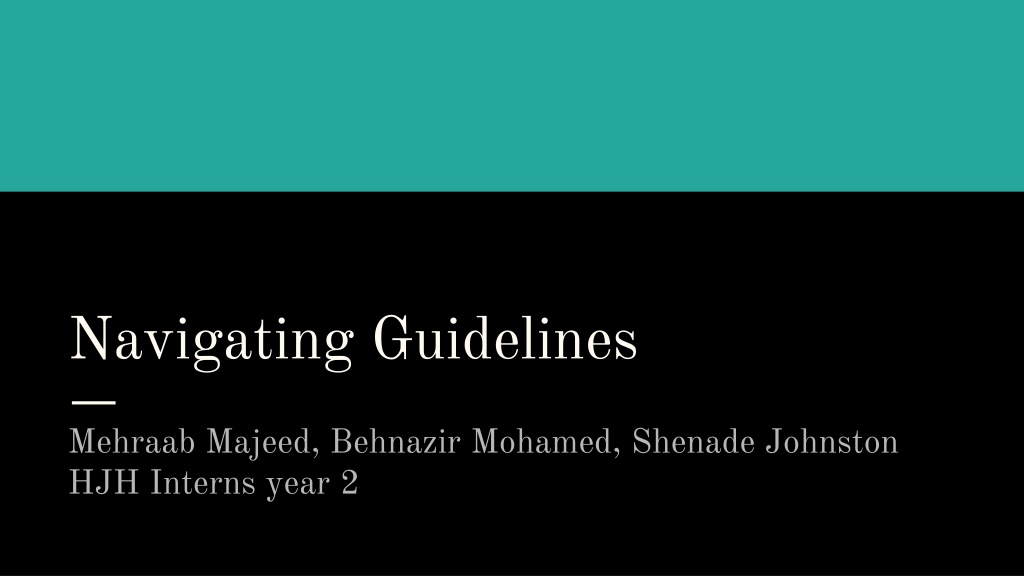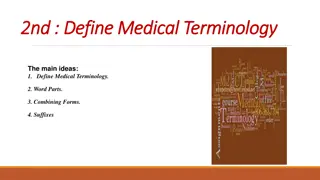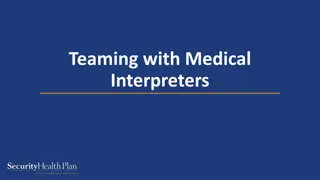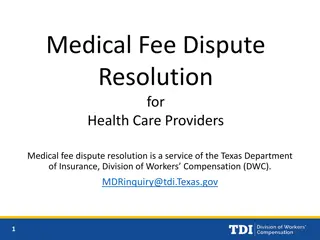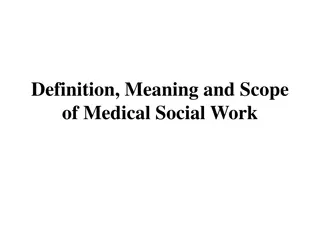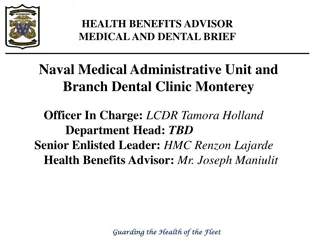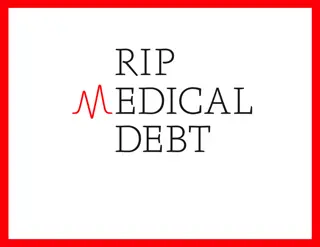Understanding Medical Guidelines and Their Impact on Healthcare Practices
Medical guidelines play a crucial role in guiding decisions related to diagnosis, management, and treatment in healthcare. They are generated through a structured process involving data collection, evidence prioritization, and consensus among experts. These guidelines, whether at national, regional, or international levels, aim to improve consistency of care, provide explicit recommendations, and ensure healthcare practices are evidence-based. While guidelines offer significant advantages such as keeping practitioners updated with the latest research and assisting in resource allocation, they also have limitations, including potential conflicts, lack of consideration for patient preferences, and complications in cases of multimorbidity. Appraising guidelines involves assessing search strategies, highlighting conflicts of interest, and evaluating the quality of evidence presented.
Download Presentation

Please find below an Image/Link to download the presentation.
The content on the website is provided AS IS for your information and personal use only. It may not be sold, licensed, or shared on other websites without obtaining consent from the author. Download presentation by click this link. If you encounter any issues during the download, it is possible that the publisher has removed the file from their server.
E N D
Presentation Transcript
Navigating Guidelines Mehraab Majeed, Behnazir Mohamed, Shenade Johnston HJH Interns year 2
What is a guideline? A medical guideline is a document with the aim of guiding decisions and criteria regarding diagnosis, management, and treatment in specific areas of healthcare.
How are guidelines generated? - - - Developed locally/nationally/internationally Sometimes adapted from existing guidelines Committee of experts gather existing research - Data Collection Prioritisation of evidence and recommendations Consensus amongst specialisits in area - -
Common Guidelines used in Primary Healthcare National Guidelines Standard Treatment Guidelines and Essential Medicines List for South Africa Adult Primary Care (APC) Guide 2016/2017 Department of Health ART Clinical Guidelines for the Management of HIV in Adults, Pregnancy, Adolescents, Children, Infants and Neonates 2019 Sexually Transmitted Infections: management guidelines
Advantages Improve consistency of care Offer explicit recommendations to unsure practitioners who may be accustomed to outdated practices Latest, keeping up to date with the most recent research Evidence-based Assist in resource allocation Protect healthcare workers from liability
Limitations Multiplicity of guidelines e.g. Bara neonatal handbook sometimes differs from EDL recommendations Multimorbidity e.g. A hospital s covid treatment guideline may not take into consideration comorbidities or serious adverse reactions Conflicts of interest and bias eg. Expert opinions may differ Patient preferences or expectations may not be accounted for - hinders shared decision making
Appraising guidelines 1. Assess the search strategy 2. Are conflicts of interest highlighted? 3. Do the recommendations make sense in your context?
Appraisal tools Evaluation of evidence Presentation of guideline content Transferability Independence Scope Information retrieval Consideration of different perspectives Dissemination, implementation, evaluation
Example: Helen Joseph Covid Wards Protocol V3 1. Evaluation of evidence No references or search strategy given 2. Presentation of guideline content Doesn t give context in which guideline should be used User friendly 3. Transferability Only applies to hospital settings where certain drugs and resources are available 4. Independence Authors not stated No conflicts of interest declared 5. Scope Narrow
Example: Helen Joseph Covid Wards Protocol V3 6. Information retrieval No sources or search strategy given 7. Consideration of different perspectives Not noted
Conclusion Guidelines can assist in the diagnosis, treatment, and prevention of disease They are useful tools in standardising care Acknowledge limitations
References Siering, U. (2013, December 9). Appraisal Tools for Clinical Practice Guidelines: A Systematic Review. PubMed Central (PMC). https://www.ncbi.nlm.nih.gov/pmc/articles/PMC3857289/ Franco, J. V. A. (2020, April 30). Clinical practice guidelines: Concepts, limitations and challenges - Medwave. Clinical practice guidelines: Concepts, limitations and challenges. https://www.medwave.cl/link.cgi/English/Reviews/MethodlogicalNotes/7888.act?ver=sindiseno What is a medical guideline, and how is it created? (2018, November 10). Www.Heart.Org. https://www.heart.org/en/news/2018/11/10/what-is-a-medical-guideline-and-how-is-it-created Woolf, S. H. (1999, February 9). Potential benefits, limitations, and harms of clinical guidelines. Potential Benefits, Limitations, and Harms of Clinical Guidelines. https://www.ncbi.nlm.nih.gov/pmc/articles/PMC1114973/#:%7E:text=They%20offer%20explicit%20recommendations%20for,appropriat eness%20of%20their%20treatment%20policies. Helen Joseph Hospital. (2021, May). Covid wards protocol (version 3). Department of Internal Medicine. InformedHealth.org [Internet]. Cologne, Germany: Institute for Quality and Efficiency in Health Care (IQWiG); 2006-. What are clinical practice guidelines? 2016 Jun 15 [Updated 2016 Sep 8]. Available from: https://www.ncbi.nlm.nih.gov/books/NBK390308/
